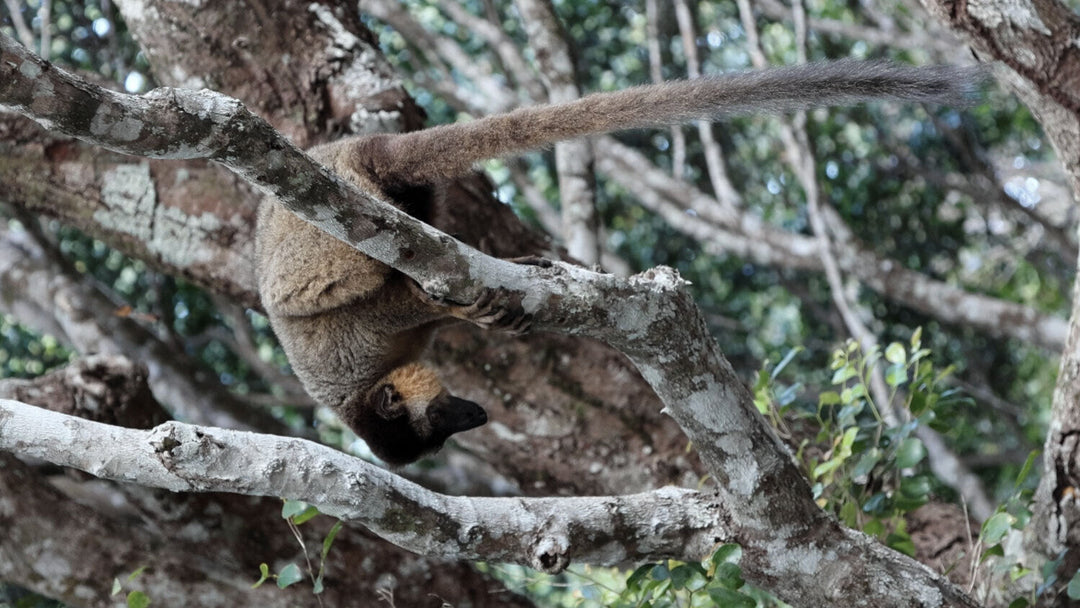Monitoring Madagascar’s Vanishing Forests: Following Lemurs Through Corridors
Madagascar’s lemurs are on the move - and we’re watching! With the use of trail cameras, SEED Madagascar is uncovering how these incredible animals navigate the island’s fragmented forests. Every snapshot tells a story of survival, forest recovery, and the power of community-led conservation.
In this blog, the SEED Madagascar team takes us into the heart of Sainte Luce to see how lemurs are moving through restored forest corridors that are reconnecting their home.
Madagascar’s lemurs, found nowhere else in the world, are facing an unprecedented extinction threat. To celebrate World Lemur Day, we’re shining a light on the struggles lemurs face in southeast Madagascar and how cameras donated by NatureSpy are used to aid in their conservation.
Habitat loss has long been an issue in Madagascar, but the rate of deforestation has increased dramatically in recent years. Since 2000, Madagascar has lost 29% of its remaining forests, with an additional 200,000 hectares being lost annually. Sainte Luce, the focal point of SEED Madagascar’s conservation research efforts, is no exception. Sainte Luce is home to some of the last remaining littoral forests in the country, and without the combined effort of SEED, local partners, and the Sainte Luce community, these forests are at risk of being lost in the near future. Without them, both local livelihoods and the survival of lemurs and other unique wildlife are in serious jeopardy.
Some forest fragments have been designated for sustainable community use, while others are considered protected zones where this is strictly prohibited. However, this alone has not been enough to prevent degradation of these forests. Our Ala Programme, launched in 2019, seeks to restore lost connections between forest fragments that have been cut off by fire and logging. These forests are essential habitats for the region’s arboreal lemur species, which depend entirely on continuous forest cover and are now endangered due to fragmentation. Thanks to camera traps generously provided by NatureSpy, our team has been able to accomplish monitoring goals that would have otherwise been impossible.

A Thomas' dwarf lemur sneaks into view.
The camera traps have been mounted in our forest corridors as part of the Ala Programme, enabling us to record lemur movement. Camera traps are a non-invasive way to gather data that would otherwise be inaccessible. By comparing lemur activity with our flora and fauna data, we gain a clearer understanding of how these corridors are helping ecosystems recover. This research offers a holistic view of corridor success.
Our camera traps have already captured lemurs actively using the corridors to reach previously cut-off habitats. This gives us hope that, with continued monitoring from our researchers and support from the community both in and outside of Madagascar, the lemur populations will not only survive, but thrive.

A family of red-collared brown lemurs.
Through the Ala Programme, we aim to expand existing habitats, meet community needs, and build sustainable, locally-led forest management structures. By studying the local flora and fauna in Sainte Luce, we are learning how to reconnect what has been broken. Thanks to NatureSpy's support, we can continue to protect Madagascar’s forests and the unique wildlife that depend on them.

A Thomas' dwarf lemur moves through the canopy.
Many thanks to the SEED Madagascar team for sharing their insights. You can learn more about their conservation work, the Ala Programme, the equipment they use, and more, on our SEED Madagascar Project Page.


